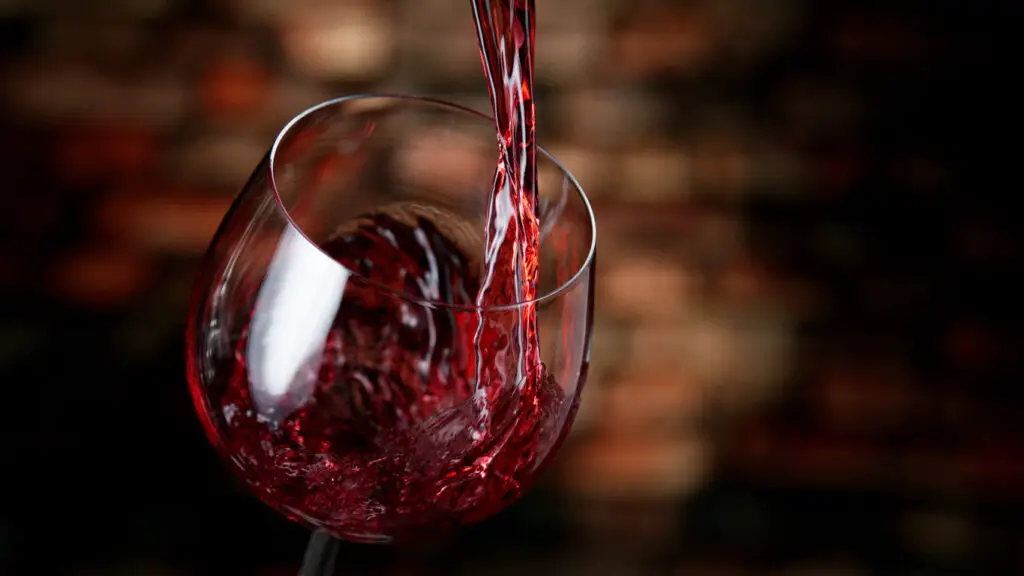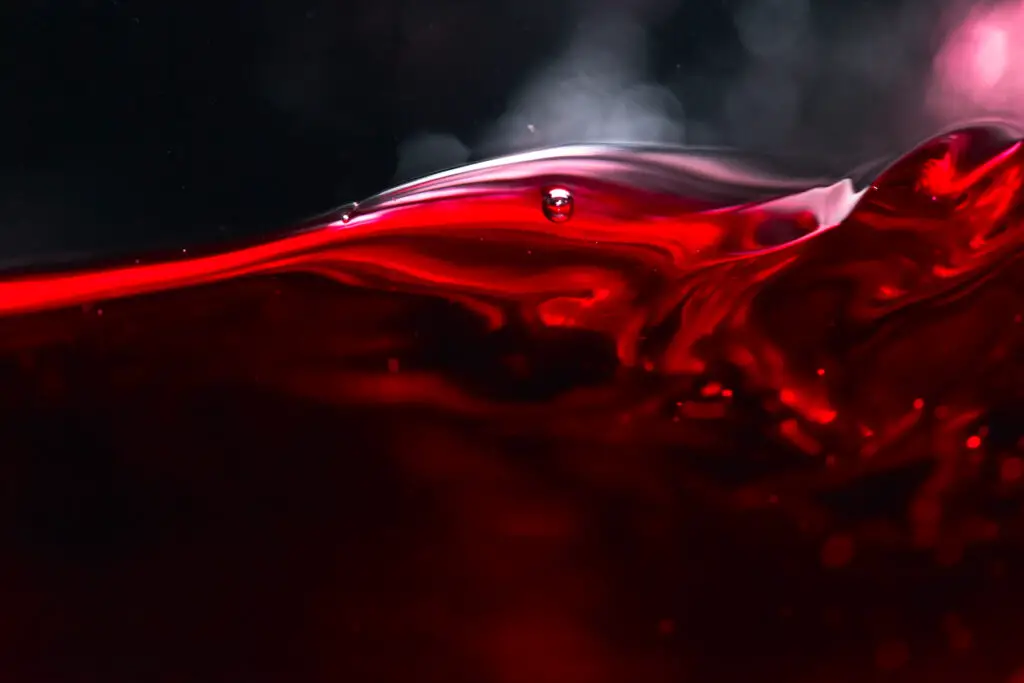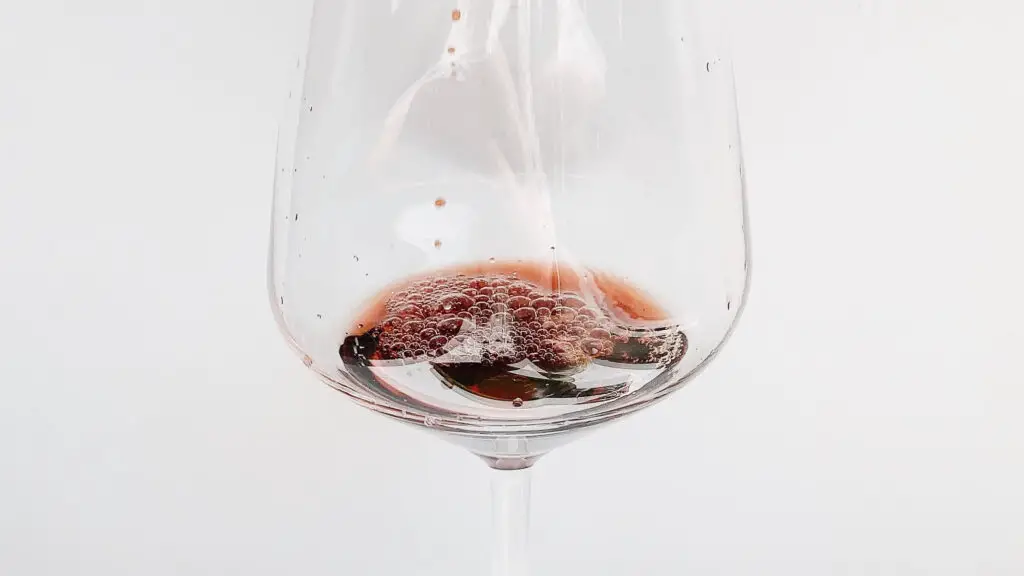Red wine is, naturally, known for its rich and bold color. This bright color is often associated with passion, love, and power. But, contrary to popular belief, this color doesn’t really come from the grapes themselves. So, that may lead you to wonder, does red wine have dye in it?
Most red wine does not have dye in it. But the answer to this question definitely depends on the type of red wine you drink. Expensive, high-quality wines usually don’t have dye in them. Instead, the color is extracted from grape skins during the winemaking process. But, cheap wines may have an additive dye called Mega Purple, which can cause your teeth to turn purple.
Let’s get deeper into the chemistry of red wines and why they are red!
How Is Red Wine Made?
Before you can answer the question, does red wine have dye in it, you should first understand the winemaking process.
The Skins
Red wine is made similarly to white wine, but with one big difference. This wine usually ferments with the skins and juice of the grapes mixed in a tank or vat. Before fermentation, white wines are pressed in order to separate the juice from the skins.
The skins in red wine production let color, flavor, and textures be integrated into the juice. During the process, the yeast also transforms sugar into alcohol. The pulp provides the grape juice, while the skins give red wine (like Chianti) its color. So, when speaking about high-quality wines, the answer to the question of does red wine have dye in it should be no!
Harvesting The Grapes

Grapes for red wines can be harvested already in late summer or early fall at the latest. The initial green of the grapes turning to dark red or blue-black should be a sign that these are ready to be collected. This period of growth is called veraison.
Vineyard workers will cut the grape clusters from their vines by hand or by using a propelled machine that shakes the grapes off from their stems and then collects the individual berries along with any juice that spills.
Author Note: Then, at the winery, winemakers will sort through mildewed grapes, raisins, leaves, and dirt. The grape clusters then pass through a de-stemmer/crusher that will remove the whole berries from their stems and squeeze them to get the juices flowing.
The juice produced at the stages before pressing is done is called free run. Grapes harvested by a machine are usually already for fermentation. Many winemakers will also add a specific dose of sulfur dioxide at this part of the process, and also later, to get rid of unwanted microbes and minimize oxidation.
Red Wine Pressing and Fermentation
The mixture of juice, skins, and seeds is called must. Many winemakers will let the must cool for a day or two, the process known as cold soaking, to extract all color and flavor components from the grape skins before alcohol is created.
After this, commercial yeast is usually added to start fermentation. Some winemakers prefer letting the native yeast clung to the grapes or in the cellar’s atmosphere do the fermentation. Whichever method is used, yeast cells activate in the sweet solution and start to turn the sugar into alcohol, carbon dioxide, and heat.
A cap of skins will start to form on top of the must. This cap will need to be blended into the juice at least once a day but usually more during the fermentation process to maintain a moist environment. The fermentation process is also going to release carbon dioxide while allowing uptake of oxygen, speeding up color extraction from the skins, and managing the heat, which may exceed 100ºF if not controlled.
Winemakers usually stir the must or wet the cap by many different methods. The cap can be punched down, the juice can be pumped into the tap, or the juice can be taken off the solids and then used to re-soak them.
Pressing the Grapes
Later, the must is transferred into a wine press, which separates the skins and the seeds from the juice while also squeezing the skins to coax out any pressed wine. How hard the must is pressed is an important winemaking decision. If pressed too hard, it will bring out strong tannins.
But, if pressed too soft, then the wine might end up being too light in color and texture.
The Maturation Process

Most red wines must age before being bottled and then sold. The process can last from only a few months to a few years in giant tanks, but oak barrels and vats are usually preferred when preparing high-quality, traditional red wines.
Usually, malolactic fermentation occurs during maturation, which transforms the wine’s strong malic acid into softer lactic acid. It can also occur on its own, but the winemaker can encourage it by adding a malolactic culture.
Winemakers will use barrels to transfer aromas, flavors, and texture to the wine. A new barrel will help express a more intense and spicy aroma along with enhanced flavors. Neutral vessels such as old barrels or concrete/clay containers are used to smooth the wine texture.
Author Note: French oak barrels are two times more expensive than American barrels, but they provide a more complex and subtle variety of spices. American white oak barrels are used in many wines and provide generous vanilla and coconut nuances.
The Final Touches
Red wine is purified during the maturation part by racking, fining, and filtering. Unwanted sediments such as dead yeast cells and grape skin bits settle out of red wine during the aging process. They will form a gross layer at the bottom of the barrels and tanks. Racking involves pumping or siphoning the clear wine from the sediment, which can be thrown out.
Winemakers can also adjust red wines that taste too sharp or look hazy with a process known as fining. This takes advantage of the binding abilities of egg whites or bentonite clay. These agents will gather any unwanted substances and then fall to the barrel/tank bottom.
Blending is also an important step in making red wine. The winemaker will be able to increase complexity and create perfect balance by blending together wines from different vessels.
Mega Purple
So, does red wine have dye in it? As written above, some cheaper wines tend to have a dye additive called Mega Purple. This is a grape concentrate that thousands of wineries secretly use to “color correct” their wines. It is made from a grape named Rubired; Mega Purple is very rich in color (“teinturier” is French for a grape with red skin and red flesh).
To create Mega Purple, these grapes are made into a specific form of wine with lots of residual sugar (about 68%) and very deep color. This color is so rich that when Mega Purple is used, it is only done in very small amounts.
So why do winemakers use it? And why do they not want you to know? One major factor is for visual aesthetics and marketing. Many people are conditioned to think that wines have to be really red to be good. Especially if you’re looking around in a supermarket, seeing a nice inky red in the bottle (like a cheap merlot) makes you think you’re getting more quality than you would actually find in a $10 bottle.
Other Qualities of Mega Purple

Aside from the deep color, Mega Purple adds “roundness” and further expresses the fruity flavor or residual sugar of a wine that may taste flat by itself. Mega Purple can also cover up the pyrazine flavor, so the wines don’t taste like green bell peppers. Even though some people prefer vegetal flavors, fruity and sweet tasting-wine usually sells more.
In fact, Mega Purple may also be used by boutiques and small wineries, and not just cheaper wines. While bulk supermarket wines heavily rely on this additive to create a generic, fruity, and soft red taste, expensive wines also sometimes contain Mega Purple, too. Naturally, all of this is done under the table, as it will bring down the name of any winery that admits to using it as an additive.
Since no one really knows how much Mega Purple is added into the wines, there is no information as to how it can impact people. All we know is that it causes “purple teeth.” So, if you open your fancy bottle of wine only to have purple marks on your teeth and wine glass, then you already know that it contains Mega Purple dye.
Author Note: You are probably drinking grape concentrate and lots of residual sugar instead of the delicious red wine you were expecting, so next time opt for a different wine at the store.
Conclusion
There you have it, your answer to the question does red wine have dye in it! Next time, look out for purple marks on your glass to know what wine to avoid. It is easy to find a luxury wine without dye – you just have to be observant! So, pour yourself a glass and enjoy your evening.
To living a full-bodied life,
Wesley

